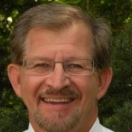
 Edward Wiest is being honored as a Champion of Change for his efforts in school turnaround.
Edward Wiest is being honored as a Champion of Change for his efforts in school turnaround.
As a teacher, I have thought long and often about my students and about how to help them succeed. My students are primarily Native American and live on a reservation. In the past I have focused on the problems they face – the same litany of problems students in poverty everywhere are challenged with. These can be overwhelming at times. Lately though, I have been focusing on their strengths. What do they bring to the table? They bring an array of strengths: resilience, humor, dreams, aspirations, an incredibly strong sense of community, and an acute awareness of their cultural heritage. Instead of trying to “fix” their problems, maybe I could help them build on what they already have.
It is an honor to be chosen as a School Turnaround Champion of Change. Honestly, though, I believe I am just a representative of teachers everywhere and especially the dedicated teachers I have met on reservation schools in my state. Two years ago my school was chosen as a School of Promise. This was accomplished through a federal School Improvement Grant given to the state of Montana. A number of schools on various reservations across the state working together with the state Office of Public Instruction committed to try to bring about positive long term change in the educational outcomes of the students in these schools. This was a wonderful opportunity to put into effect what I had already been considering – building on strengths instead of focusing on weaknesses. My role in all of this was to help facilitate this process, both locally (as a teacher leader) and at a state level (as a representative of teachers involved in the grant).
We started by building better and closer relationships with the community, both the schools and the Office of Public Instruction (OPI). Leaders in OPI set up community meetings with parents in the local school districts. Teachers, including myself, went on home visits in order to get to know parents better and to listen to their concerns and their hopes for their children. We then connected with various resources to build networks of support for our students.
For example we integrated principles from the Montana Behavior Initiative to create a better school climate. We also identified at-risk students and are currently working with those students and their parents to find ways to assist their academic success through a comprehensive wraparound process. This included mental health counseling for trauma, drug and alcohol abuse counseling, additional tutoring, weekly checkups on grades and attendance, and teachers working with small groups of students to help plan and prepare for post-secondary education. Local and national experts were brought in so that teachers and administrators could receive training on implementing educational best practices in the classroom. We put a greater emphasis on bringing the local culture into our classrooms. After-school programs and clubs were created for the students. Most of all, state officials, administrators, parents, bus drivers, cooks, custodians, teachers, and students came together to make significant constructive changes in our schools. From the state level to the local level, we are working in concert to significantly impact our students’ lives.
I learned long ago in my teaching career that one individual can make a difference. Now I am learning the power of “together.” One dedicated individual can make a powerful impact on students’ lives, but to affect long term positive change in low income, low performing schools on Native American reservations takes the combined efforts of all the stakeholders. Together we can do it.
Edward Wiest is a mathematics teacher at Plenty Coups High School in Pryor, Montana.


